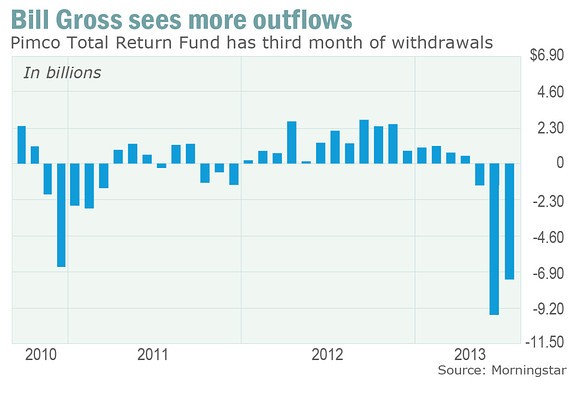Bond Fund Total Return
Post on: 19 Июль, 2015 No Comment

Although most investors in bond funds focus on Yield, there are actually 4 components to a bond funds return. Those who focus only on yield are missing the big picture, and could lose money as a result. The most important number is the fund’s total return, which is made up of the following 4 components:
1. Bond Fund Yield
The interest income earned on the bonds held in the bond fund’s portfolio. Most investors focus on yield in order to understand the income they can expect to earn from a bond fund. Unlike individual bonds however, most bond funds do not hold bonds until maturity, and buy and sell bonds on a regular basis. As a result the yield that is quoted on a bond fund may not give an accurate reflection of what you can expect in the future. Some bond yield measures try to capture the historical performance of a fund, while others try to provide a view as to what an investor might expect in the future. The three popular measure of yields are:
- The Distribution Yield The equivalent to the current yield of an individual bond. It takes the dividend income distributions made by the fund in the last 30 days and divides it by the Net Asset Value (share price) of the fund, which is then annualized.
- The 12 Month Yield takes all the interest payments made by the fund over the last 12 months, and divides it by the fund’s NAV + any capital gains distributions that were made during that same time period.
- The SEC Yield the closest comparison to the Yield to Maturity of individual bonds, and the preferred yield measurement used here at Learn Bonds. The SEC Yield is an estimate of the annual yield of a bond fund assuming the bonds in the fund’s portfolio over the past 30 days were held to maturity, and that all interest income is reinvested.
For a more detailed explanation of each of the above visit our article on bond fund yield calculations .
2. Net Asset Value Fluctuations
When you invest in a bond mutual fund you are purchasing shares in the fund. The value of those shares is called the Net Asset Value, or NAV for short. As interest rates fluctuate so will the value of the bonds held in the bond fund’s portfolio. Until the bonds are sold by the fund, these gains or losses reflected in the funds net asset value. Sometimes there is a tradeoff between interest income and Net Asset Value. Although you may be earning a high income from a bond mutual fund, you could be losing money on the value of the shares you have purchased. Conversely you could be earning a small income from the fund while at the same time earning a large gain in the value of the shares you own in the fund.
This is especially important to understand in the current low interest rate environment. As interest rates are so low, the majority of the profit or loss on a bond fund is likely to come from changes in the fund’s NAV and not from the income paid out by the fund. For example, long-term government bond funds from June 2011 – June 2012 had a total performance gain of 36%. During that time approximately 3% out of the 36% gain was attributable to interest income.
3. Capital Gains Distributions
The changes in value of bonds held by the fund are reflected in changes in the NAV of the fund. Once those bonds are sold, if there is a gain on the bonds, then those gains are distributed to investors in the fund. Normally this happens either once or twice a year. After the distribution is made, the NAV of the fund drops by the same amount as the distribution. Investors can choose to take the distribution or have it automatically reinvested in the fund.
4. Compound Interest on Reinvested Interest and Capital Gains Distributions
When investing in a bond mutual fund you have the option of having any dividend interest income and capital gains distributions (if any) in the form of a check. One of the advantages of investing in a bond mutual fund is that you can also have those dividends and capital gains distributions automatically reinvested in the fund.
When you see the return posted for bond mutual fund, the numbers assume that all interest income and capital gains have been reinvested in the fund.
Total Return
The above 4 things combined give you the fund’s total return, which is the most important number that a bond fund investor should focus on.
Want to learn how to generate more income from your portfolio so you can live better? Get our free guide to income investing here .














